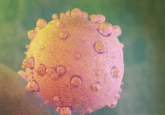Double duty for TaqMan probes

Taqman hybridization probes have been used for mutant allele detection by DNA melting curve analysis. Now researchers have also cleverly used these probes in another capacity in the assay in order to increase its sensitivity.

Methods to detect and quantify in tumor DNA the levels of specific oncogene mutations that drive tumor formation are critical for cancer diagnostics. Among these methods, DNA melting analysis (DMA) using TaqMan probes is simpler and higher-throughput than costlier, more laborious methods such as pyrosequencing; however, DMA is also less sensitive than other available methods. Now, in this month’s issue of BioTechniques, Anatoly Lichtenstein and his team at the N.N. Blokhin Cancer Research Center in Moscow, Russia demonstrate that they can significantly increase the sensitivity of DMA for mutant allele detection through a simple but clever modification of the assay.
In standard DMA, researchers use asymmetric PCR to generate sufficient quantities of one strand of the target sequence that is subsequently hybridized with a TaqMan probe in order to quantify the amount of a specific allele by melting curve analysis. In the modified DMA approach, the TaqMan probe is also used during the asymmetric PCR step as a blocking agent for the wild-type allele, thereby enhancing amplification of the mutant allele. This allowed Lichtenstein’s team to obtain a 10-fold increase in the sensitivity of detection of BRAF and NRAS mutants.


